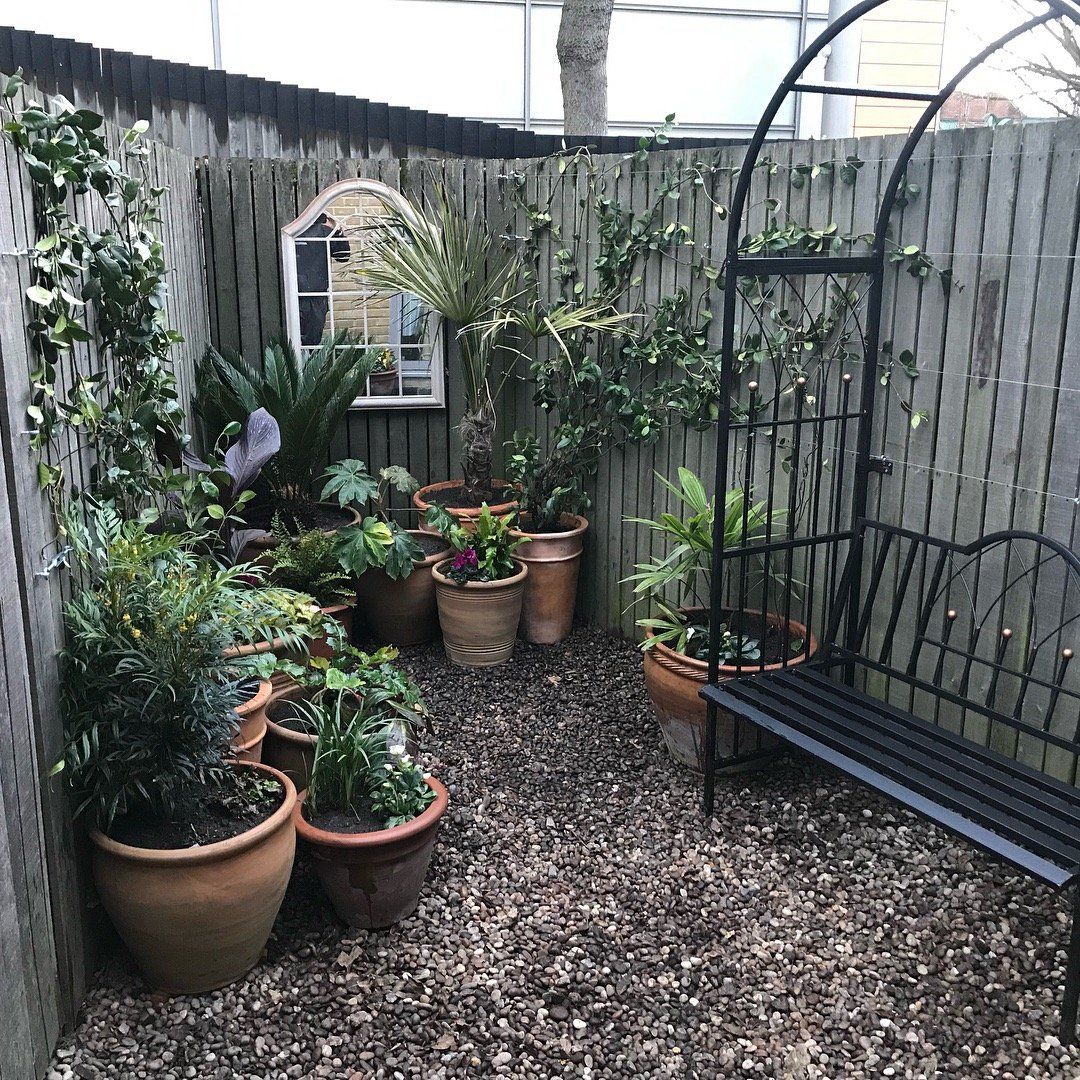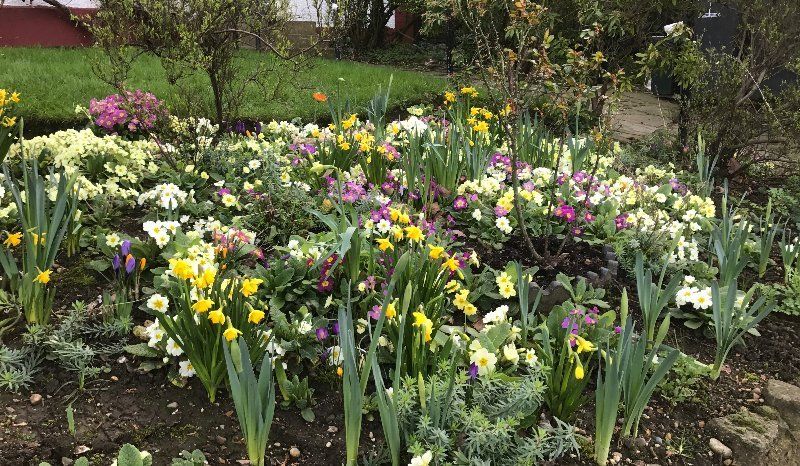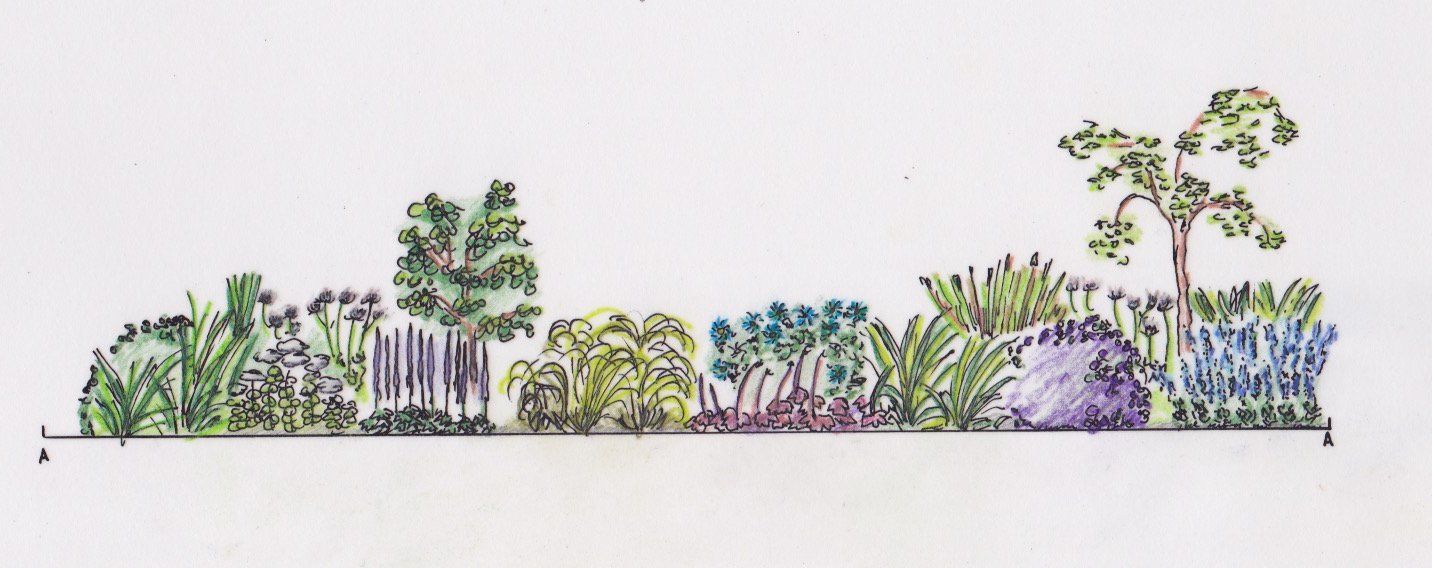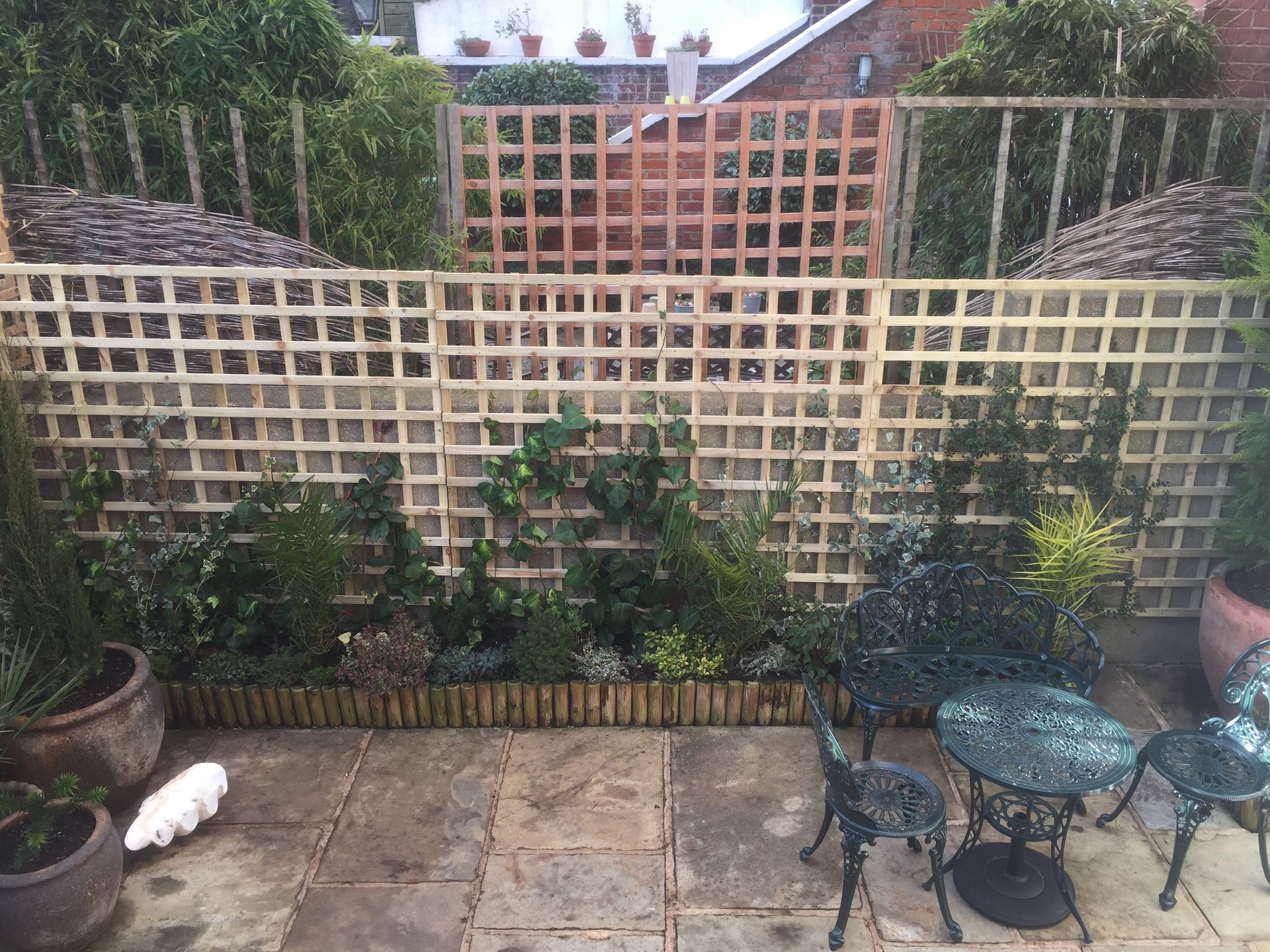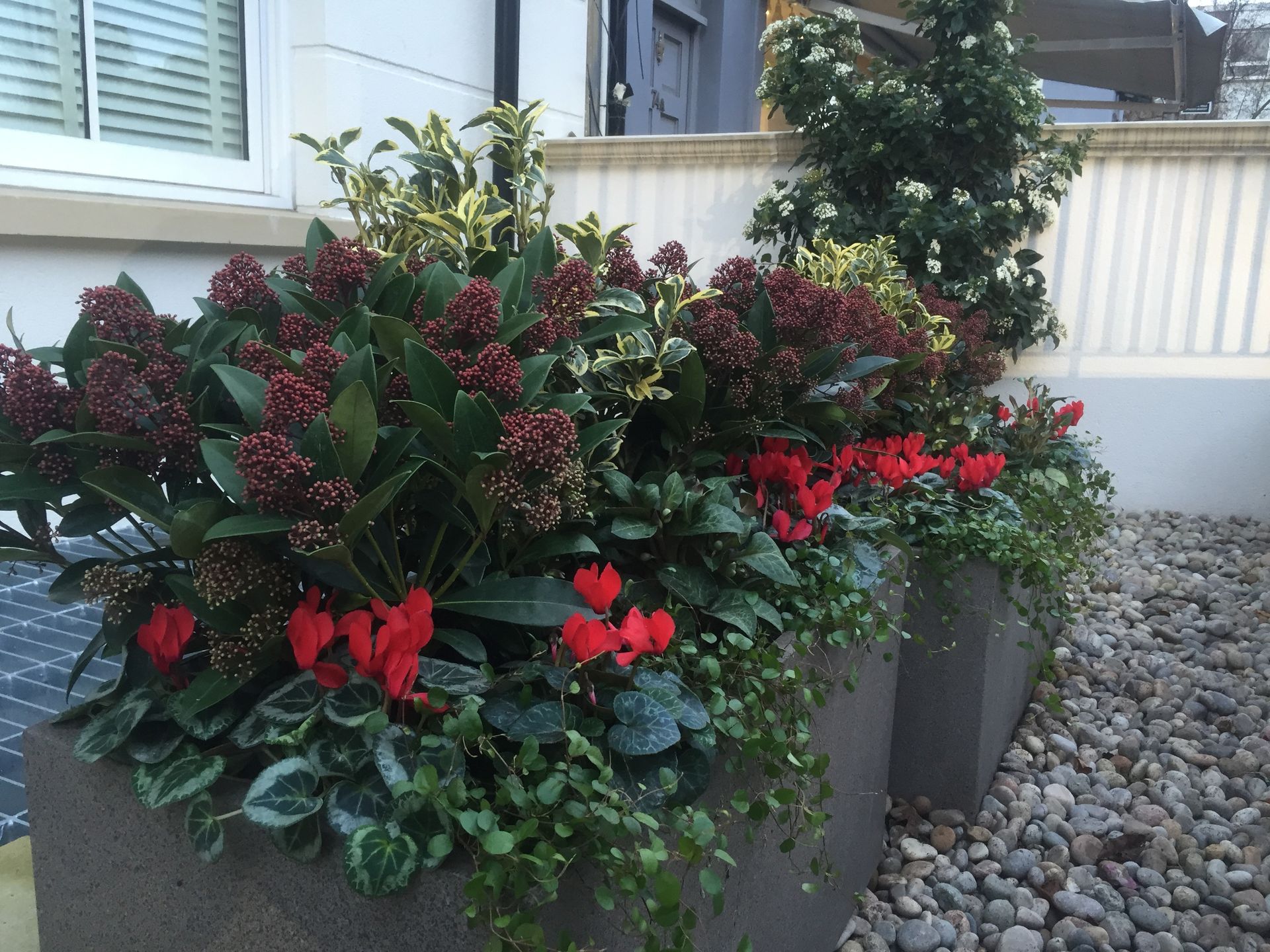The Rose corner & Box parterre
- By James Eltringham
- •
- 14 Nov, 2016
- •
Replanting an overgrown corner into a formal scheme
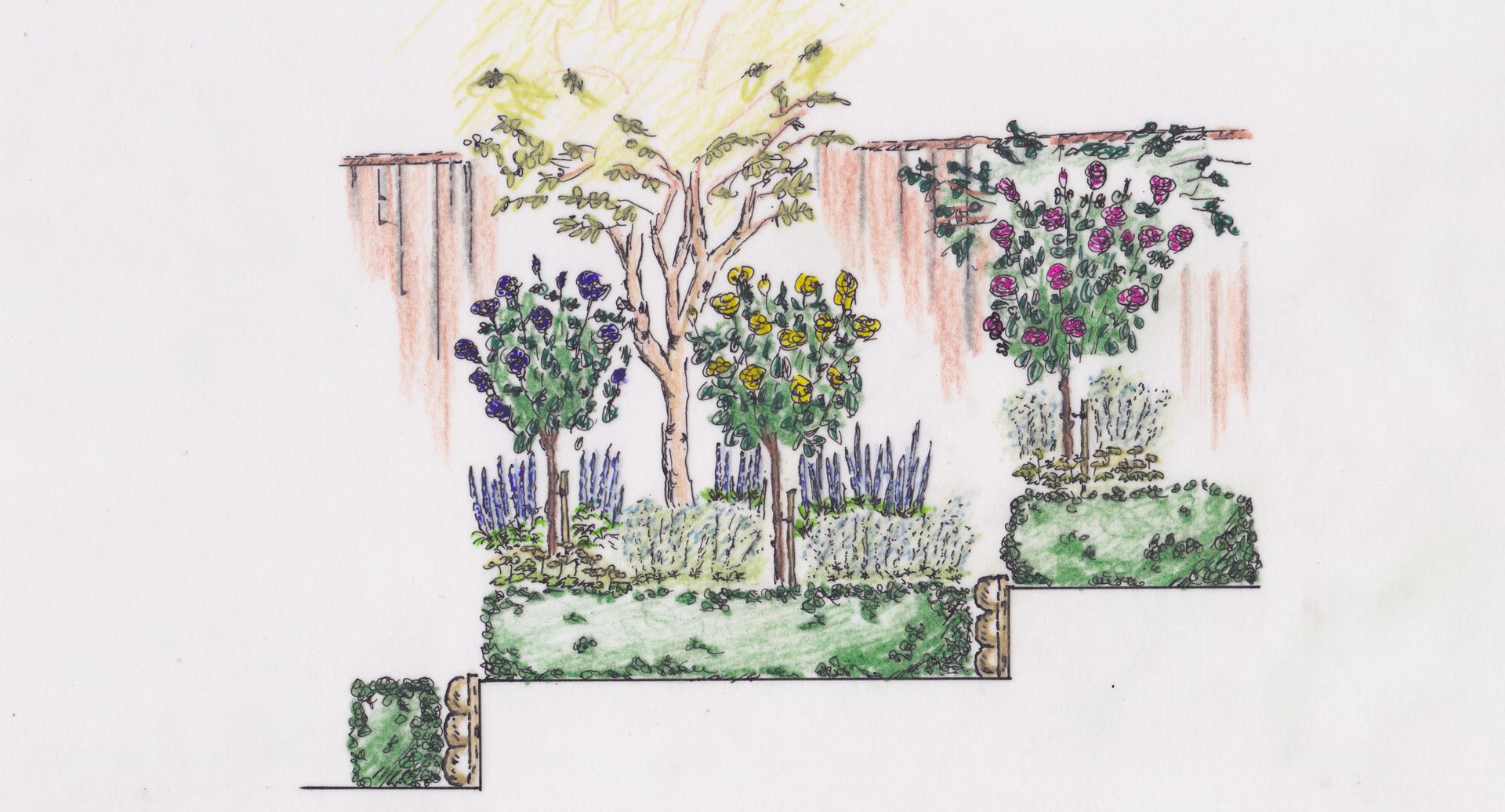

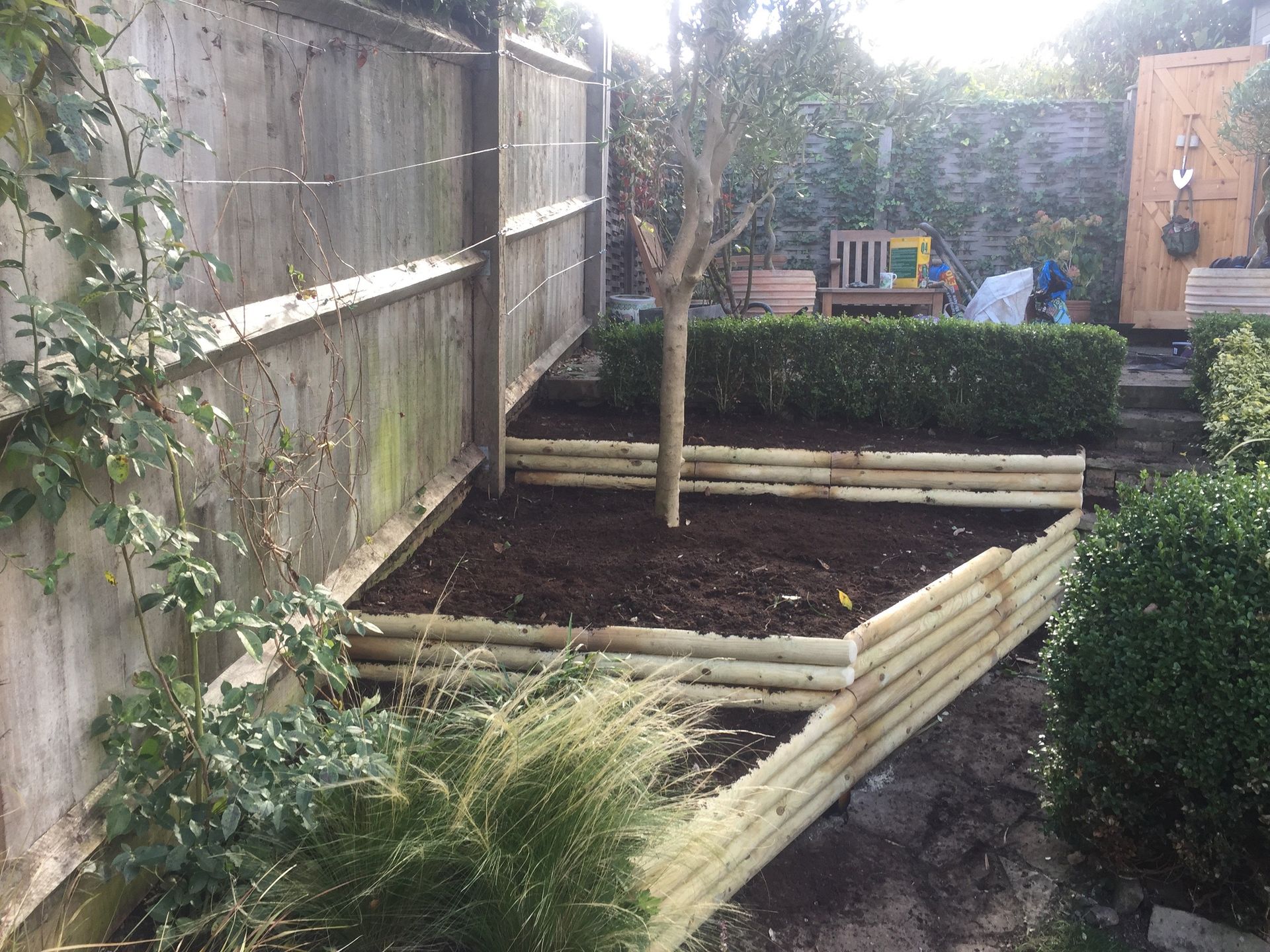
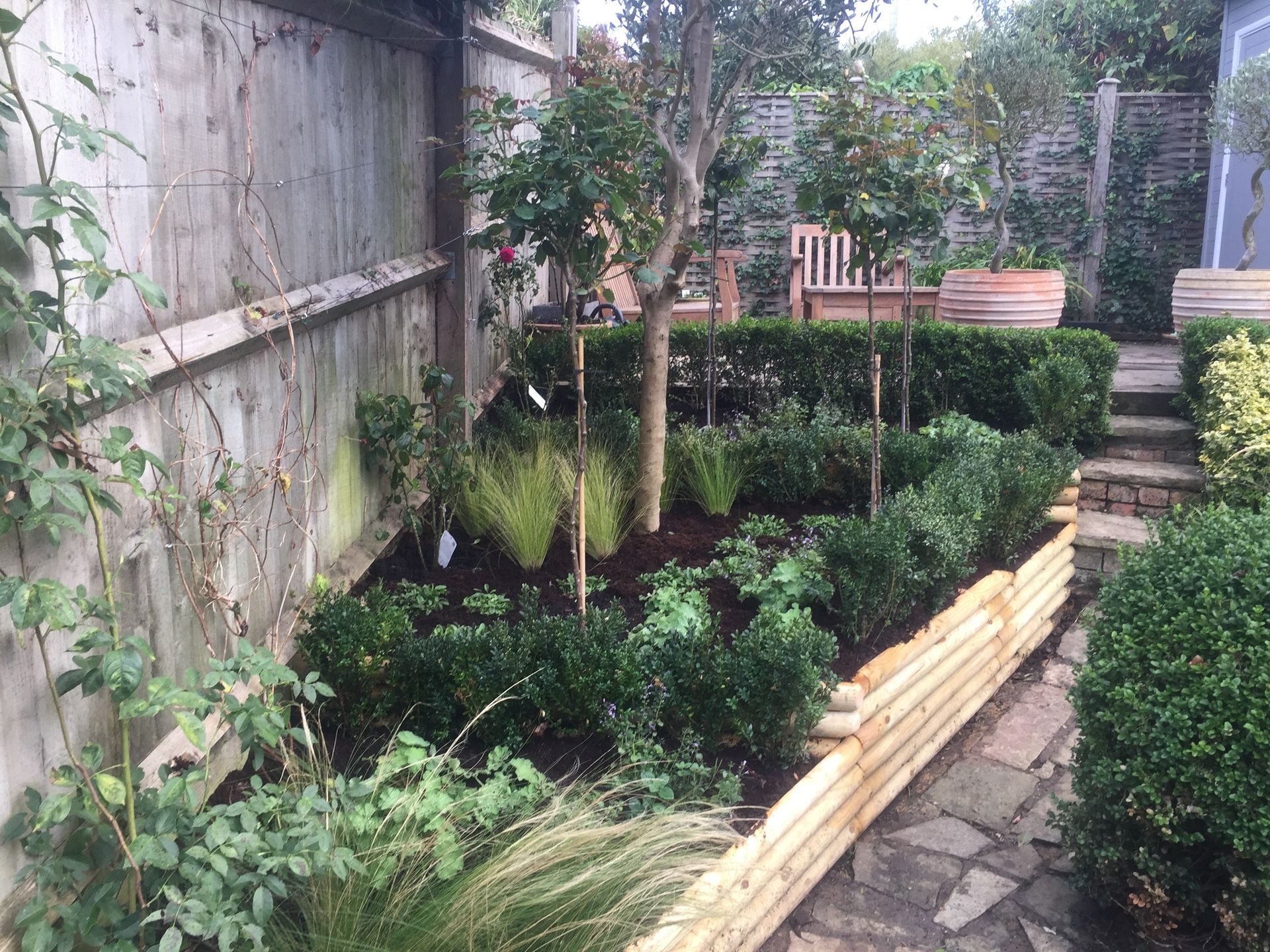
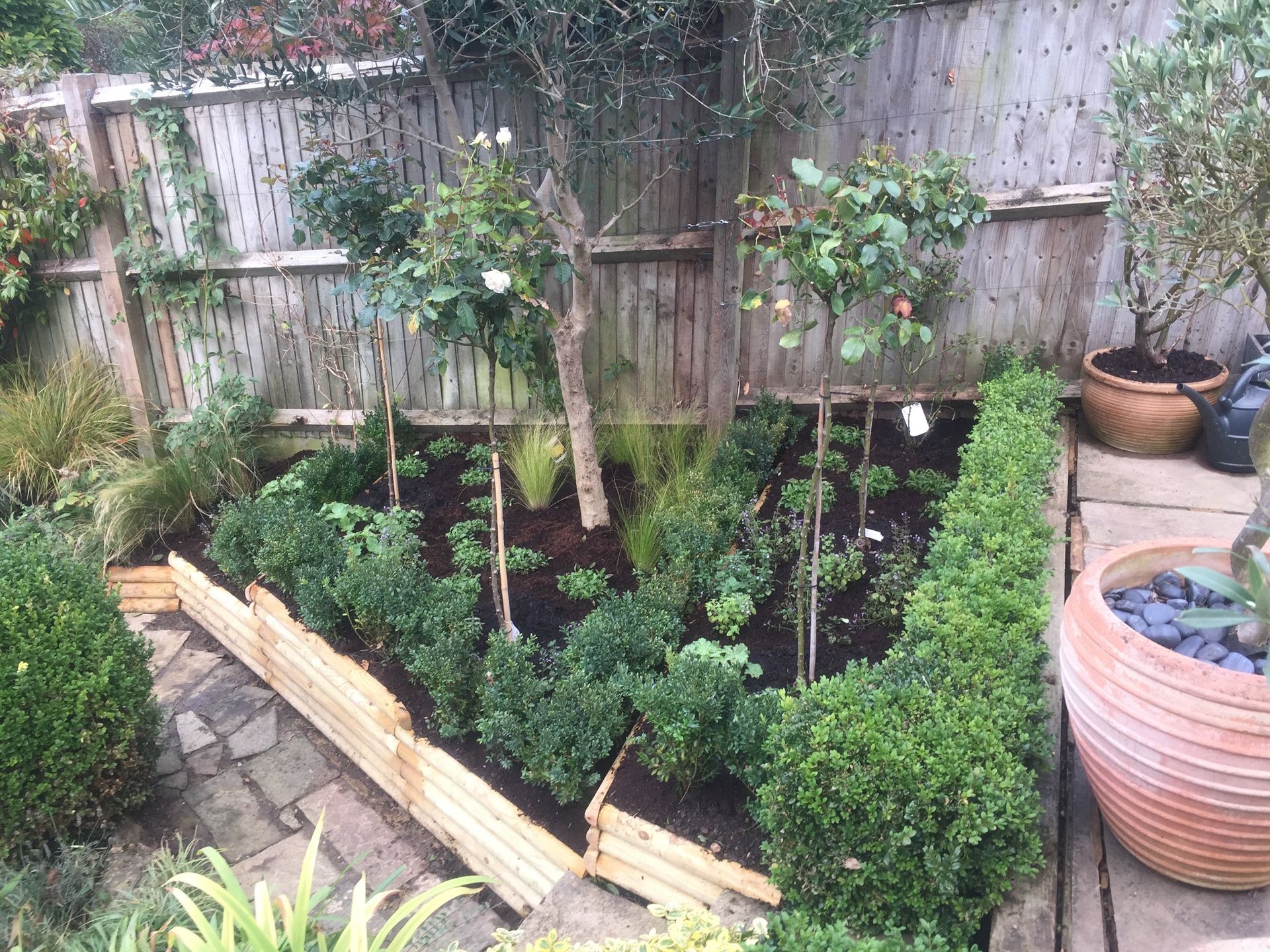
The half-standard rose bushes are of course the main attraction, but are under planted are Veronica, Calamintha and Alchemical. The other existing plants in the garden replicate their colours and form. They will die back in the winter giving an opportunity for spring bulbs to bring in a change of season colour. The area has Narcissi and tulipa. I’ve included two climbing roses to partially cover the back fence.
It's obviously not at it's best now but should give a fantastic show from spring. the Veronica for instance should grow to a hight of 1m, and the Calamintha will bush out, both filling the area under the roses.
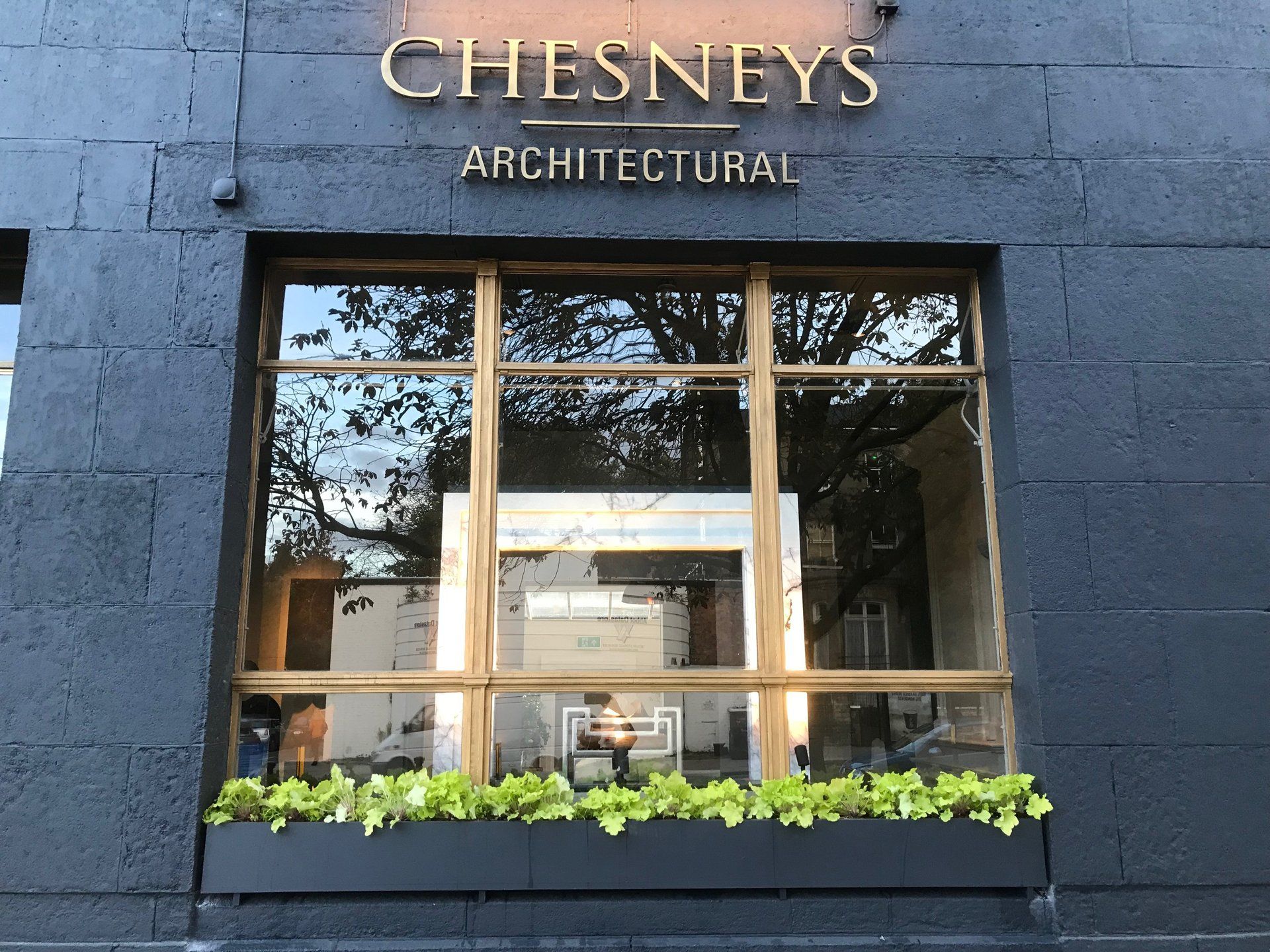
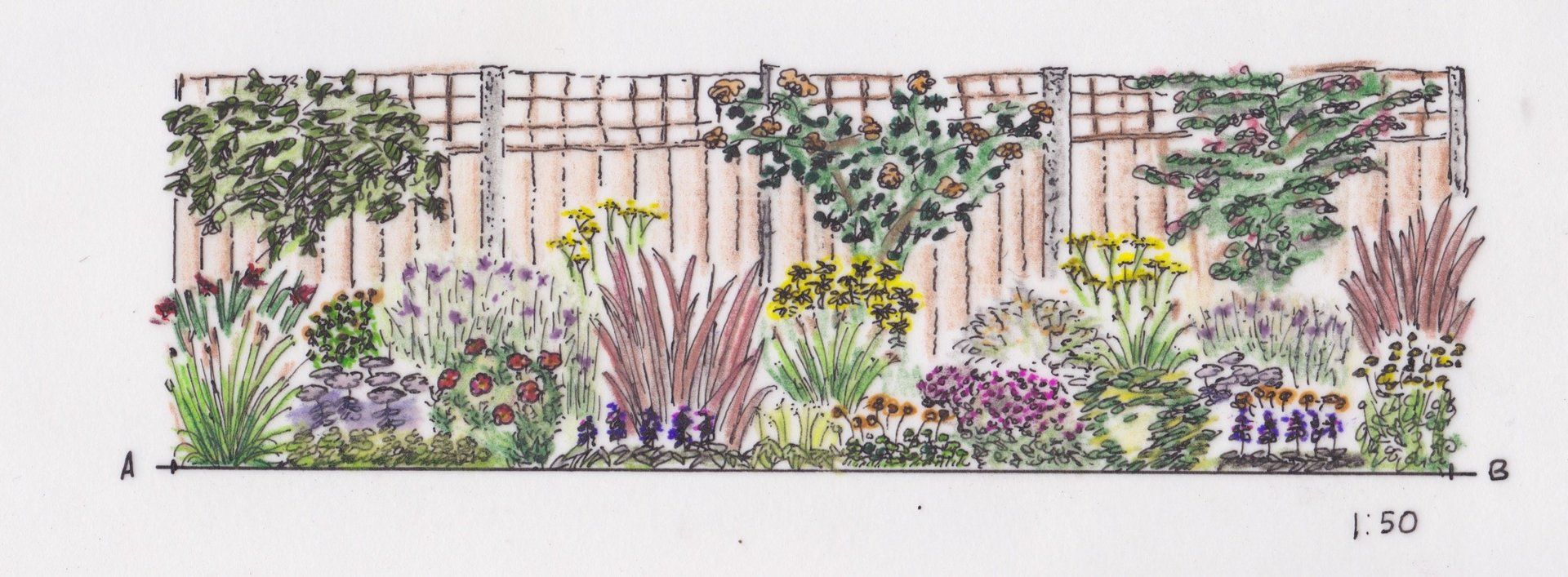

The idea behind this design is to produce a white garden that reflects the evening sun, offers evergreen interest and morning fragrance. There is also an exotic theme with the Trachycarpus, Fatsia and Choysia , with differing leaf shape and size to offer contrast.
The aspect of the garden has led to a differing approach to the areas. The North facing bed has a number of shade tolerate plants, with many offering evergreen foliage for all year round interest. The rest of the beds receive sun for long periods of the day. These areas have a high number of plants that produce a strong fragrance and an iridescent colour. There is a mix of evergreen and deciduous planting. Plants such as the Cosmos are annuals but do self-seed. These areas can give the option of changing the design from year-to year.
The planting form is repeated with the rounded Pittosporum , as well as the vertical Actaea, Digitalis and Aconitum . A number of the plants, particularly the climbers, Tracyelospurnum and Lonicera , offer a rich burgundy or copper colour which will act as a foil to the white flowers, making them sparkle in the evening sun.
There is also a bulb overlay (not represented here). The bulb design is essential to promote an all year round interest. Areas taken in the summer by herbaceous perennials and annuals will look bare in the winter-spring without a bulb plan. Galanthus and Colchicum give interest in the darkest winter days, then the planting leads to the Narcissus and Tulipa in the spring. Alliums give a statuesque presence through the summer.
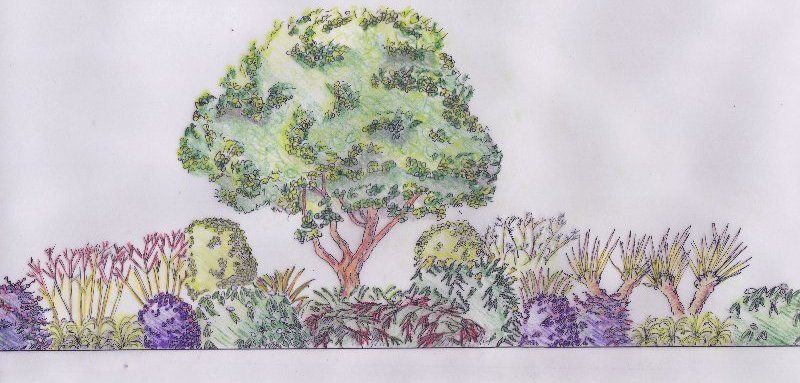
The planting centres on the medium sized, evergreen, Arbutus . Under planted with white Erica , the fabulous coloured bark is shown in it's full glory. Many of the plants are inspired by the Winter garden at the Cambridge Botanic Gardens. There are contrasting textures between the Pittiosporum , the Mahonia and the Viburnum . There are the harmonizing forms of the rounded habit/colour of many of the shrubs, including the Loropetalum and the Pittiosporum . The plants selected are low maintenance, with the majority evergreen. The harmonizing forms of the Cornus and the Salix will need to be pruned once a year but the effect is well worth the effort for their fantastically coloured stems. These plants, along with the Lonicera , will allow the winter sunshine to radiate through the border, ensuring the area remains open and bright in the darkest of winter days.

